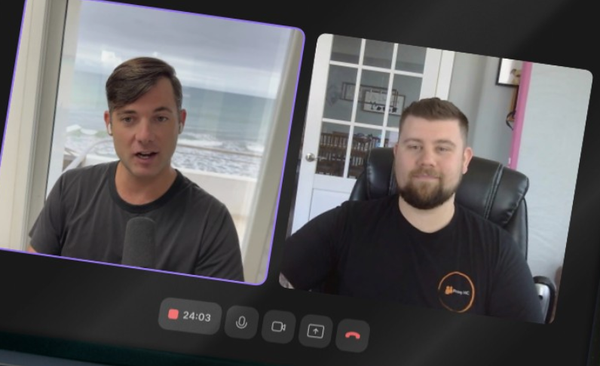How to Achieve a Five-Star Rating with the CMS

🏥 How to Achieve a Five-Star Rating with the CMS
Achieving a five-star rating from the Centers for Medicare & Medicaid Services (CMS) signifies that a skilled nursing facility (SNF) provides quality care that is above average. Conversely, a one-star rating typically indicates significantly lower quality of service . Staffing plays a crucial role in attaining a higher rating; however, similar to other healthcare sectors, SNFs face staffing shortages that hinder their ability to perform well in this area. To address this, CMS has introduced strategies to improve hiring practices in SNFs to work towards a five-star rating.
🏥 Defining a Skilled Nursing Facility
Skilled nursing facilities, commonly known as nursing homes, serve as residential settings where patients receive round-the-clock skilled nursing care from registered nurses (RNs) and support from licensed practical nurses (LPNs), licensed vocational nurses (LVNs), and/or nurse aides. According to CMS, these facilities mainly provide inpatient skilled nursing and similar services to patients who require nursing, medical, or rehabilitative care without needing hospital-level treatment. Residents may be elderly or disabled, receiving either long-term care or short-term rehabilitation until they recover sufficiently to return home .
📊 Understanding the Five-Star Rating System
The CMS Five-Star Nursing Home Quality Rating System gives an overall score ranging from one to five based on a facility’s performance in three primary areas:
- Health Inspection Ratings: Derived from unannounced state health inspections, typically conducted at least once a year.
- Staffing Ratings: Assess staffing levels according to six components.
- Quality Measures Ratings: Evaluate resident-level metrics, including performance on eight long-stay and three short-stay measures out of a total of eighteen metrics.
While a facility's star rating largely relies on its health inspection results, adjustments can be made based on quality measures and staffing ratings .Centers for Medicare & Medicaid Services
👥 The Impact of Staffing on Your CMS Rating
Recent modifications to the staffing ratings mean that the assessment is based on six measures rather than two. Insufficient performance in any of these categories can reduce your staffing rating, preventing attainment of an overall five-star rating. The staff measures include:
- Daily staffing levels of RNs, LPNs/LVNs, and nurse aides per resident.
- Daily RN staffing levels per resident.
- Weekend staffing levels for RNs, LPNs/LVNs, and nurse aides per resident.
- Turnover rates for RNs, LPNs/LVNs, and aides over a 12-month span.
- RN turnover on a yearly basis.
- Administrator turnover within the year.
Notably, three measures pertain to staffing levels, adjusted by varying resident care needs, while the other three focus on turnover. Effective recruitment and retention of skilled nursing staff are critical to meeting the required staffing levels, which directly affect your staffing score. Both RN and total nurse staffing ratings are weighted equally in the staffing star rating, necessitating a five-star rating in both categories to achieve an overall five-star score .
🧠 Defining Skilled Nursing Care
Skilled nursing refers to care and services that only licensed nurses, either RNs or LPNs/LVNs, can provide. Staff address patients’ basic needs, including all daily living activities, while ensuring safety and comfort to enhance the quality of life. Additionally, they provide education for patients and their families about specific health conditions and possible challenges.
🛠️ Five Strategies for Recruiting and Retaining Skilled Nursing Staff
Successfully developing a skilled nursing team hinges on innovative recruiting strategies to engage workers of different ages, particularly the younger generation. Millennials and Generation Z now represent an increasing proportion of the nursing workforce. These five strategies can simplify attracting younger talent and others to skilled nursing:
- Simplifying the Interview ProcessEfficiency in interviews is crucial to the recruitment process. A lengthy interview process can lead to candidate disengagement, resulting in the loss of key candidates. Setting clear expectations from the outset ensures all recruitment activities align with these criteria, serving two purposes:Many healthcare employers extend the interview timeline, risking candidates joining competitors before offers are made. Speed up the process by:Moreover, streamline other necessary hiring aspects such as educational verification, background checks, and references to shorten the hiring timeline. Keeping candidates informed throughout the process is vital to preventing feelings of abandonment. High-caliber candidates are often exploring multiple opportunities, so making job offers quickly can help secure your preferred choice.
- Assessing whether a candidate fits well in your skilled nursing facility.
- Generating a favorable impression on candidates to encourage job acceptance.
- Conducting brief phone pre-screens to collect initial candidate information, minimize in-person interview duration, and filter out unqualified applicants.
- Reducing the number of interviews by preparing essential questions ahead of time and sharing these with candidates beforehand to alleviate unnecessary pressure.
- Maintaining consistent questioning and processes for every interview to facilitate comparison, while allowing deviations for promising candidates to gather additional insights.
- Avoiding unnecessary interview rounds based on arbitrary guidelines.
- Providing all essential details to candidates about the interview logistics to aid their arrival and to facilitate smooth coordination.
- Utilizing TechnologyEmbracing technology can hasten the recruitment process, enhance connections with candidates, and streamline hiring efforts. Social media is a powerful tool for healthcare brand promotion, alongside mobile technologies that improve outreach and communication speed. Given that job-seeking healthcare professionals frequently use social media, it is an effective medium for attracting talent. Social media offers sophisticated targeting options, allowing recruitment messaging to reach the right audience based on job titles, location, and interests. This feature is unique to social media compared to traditional advertising methods. It has never been simpler to share information regarding skilled nursing openings. Technology like mobile apps, texting, and chatbots can facilitate quicker, interactive communications and data capture. Mobile interactions promise instant responses, elevating interview booking likelihood to 80%. Text messages boast a 98% open rate, whereas emails only garner around 20%. Response rates for texts are 50 times better than for emails, thereby increasing the chances of successful candidate engagement.
- Increasing TransparencyDiscussions surrounding pay transparency have intensified with the introduction of laws requiring salary range disclosures. Many organizations are adopting this practice voluntarily. Currently, numerous states mandate some form of salary disclosure, often applicable only within specific cities. The trend is growing, reflecting an ongoing commitment to pay equity. Generally, laws dictate that applicants be informed of salary ranges during the hiring process, including direct incorporation of this information in job postings to allow candidates insight into compensation upfront. Early disclosure enables employers to swiftly eliminate candidates with inflated salary expectations while attracting those who might otherwise assume lower compensation. Enhancing transparency around pay can significantly improve candidates' experiences in earlier recruitment stages. Beyond salary figures, being upfront about bonuses, additional benefits, and opportunities for career advancement can heighten applicant attraction. If pay varies, offering a range or establishing starting rates along with conditions for potential increases can clarify expectations and prevent frustrations later in the hiring process concerning discrepancies between expectations and offers made.
- Crafting Clear Job DescriptionsProviding clearly articulated job descriptions is another avenue for ensuring transparency concerning roles in skilled nursing facilities. Many healthcare organizations fail to adequately communicate the knowledge and skills vital for positions. It is essential to compile a comprehensive list of expected duties along with required competencies, both hard and soft skills. Important elements for job descriptions include:Clarity in job descriptions discourages unqualified applicants from applying for roles that do not suit their skill sets, simultaneously aiding in crafting pertinent interview questions for subsequent hiring stages.
- Clearly defined job titles and relevant keywords.
- Specific hourly rates or salary ranges.
- A summary of additional benefits.
- Insights into your company’s culture and ethos.
- A prioritized outline of responsibilities.
- Detailed application instructions.
- Offering Flexibility Before and After HiringFlexibility is a powerful tool for attracting and retaining skilled nursing staff and other healthcare professionals. Although remote work may not apply to directly hands-on roles like skilled nursing, flexibility can be incorporated in alternative.





